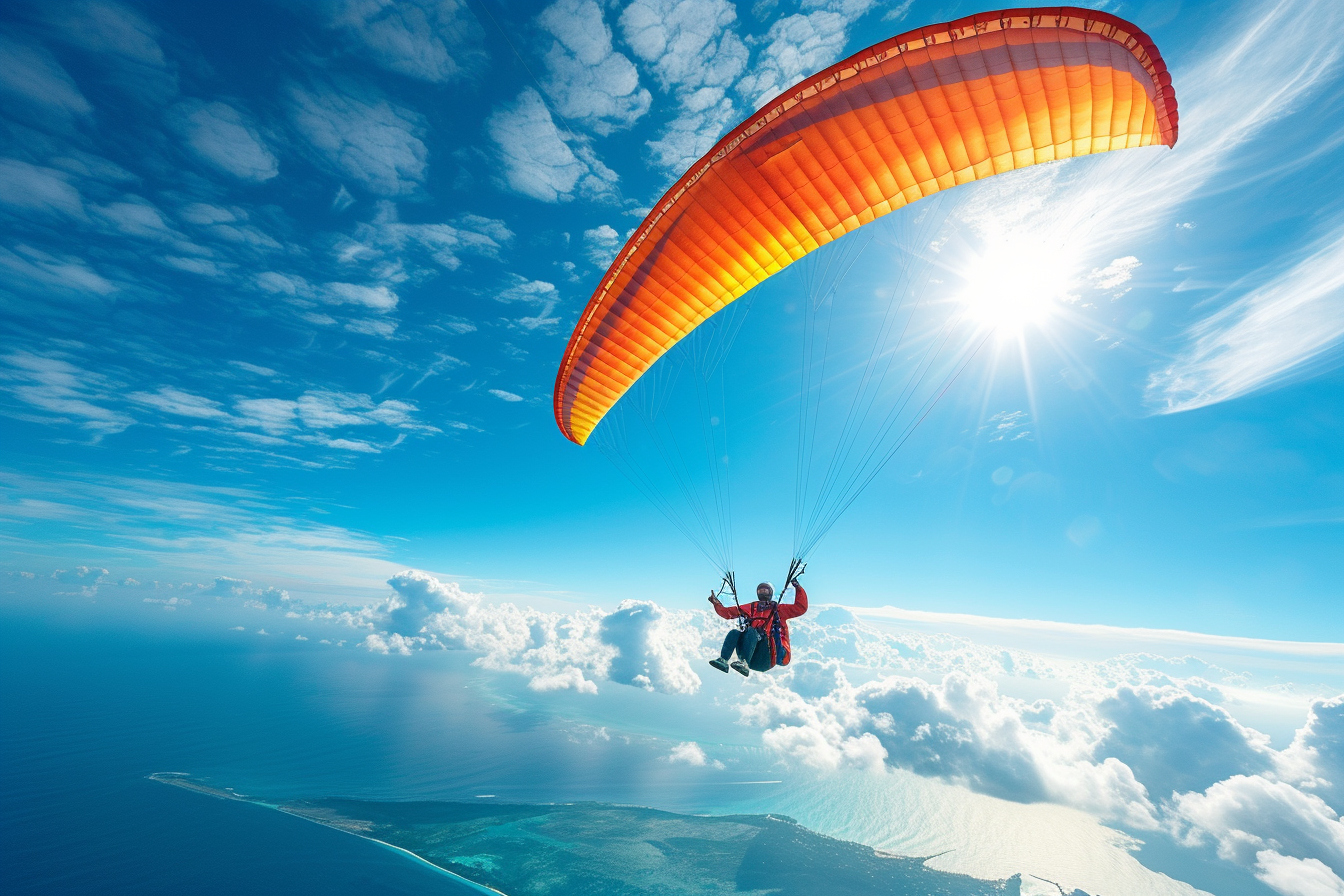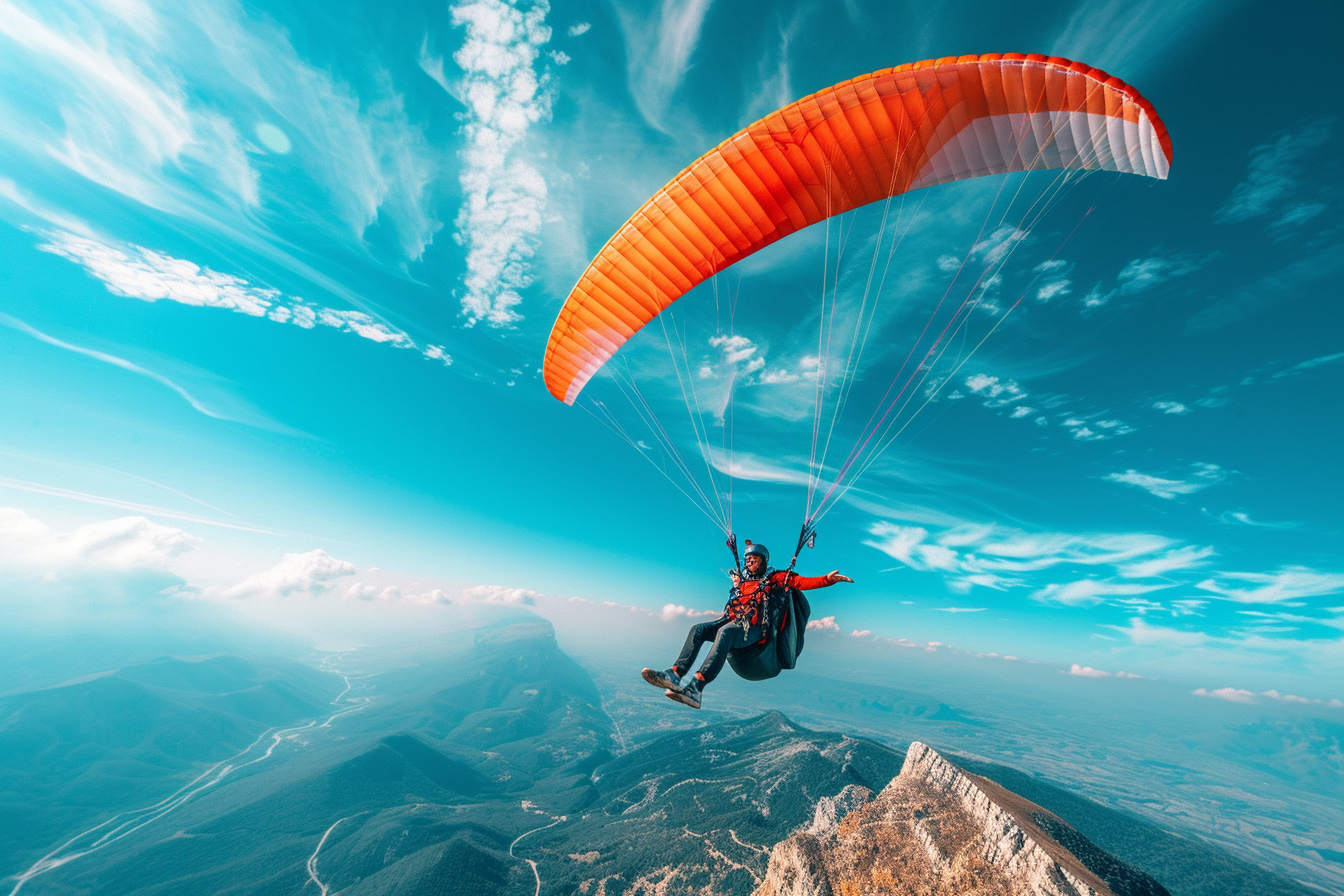Paragliding is an awe-inspiring sport that offers the freedom of flying and breathtaking views to those brave enough to soar through the skies. If you’re new to the world of paragliding, it may at first appear daunting. However, with the right approach and essential tips in hand, beginning your journey in paragliding can be exhilarating and safe. Let’s explore what you need to know to get started.
Understanding paragliding
Paragliding is a form of free-flight, where the pilot launches the aircraft by foot. The paraglider itself is a lightweight, non-motorized gliding apparatus that allows the pilot to take off from a hill or a mountain. Before strapping in, it’s crucial to have a firm grasp of what paragliding involves and the principles it operates on.
The basics of paraglidng
At the very heart of it, paragliding relies on air currents and thermals to stay aloft. The paraglider’s canopy, shaped like a wing, is made from rip-stop nylon, with suspension lines that connect it to a harness. Learning how this canopy works and how to control it is fundamental to becoming a capable paraglider pilot.
Starting your paragliding journey
Locating a reputable school with certified instructors should be your initial step. Engaging with a community of experienced pilots provides invaluable insight and guidance. Consider joining local paragliding clubs and participating in forums to ask questions and get advice.
Choose the right training program
Selecting a training program that suits your needs is vital. Look for courses that are beginner-friendly and have a strong emphasis on safety. Training should include both theoretical knowledge and hands-on flight practice. A comprehensive program will cover topics such as weather analysis, equipment maintenance, flight techniques, and emergency procedures.
The importance of ground handling
Ground handling is a facet of paragliding that newcomers often overlook. Mastering ground handling is crucial for safe launches and landings. Sessions dedicated to this skill will enable you to better understand how your paraglider reacts to controls and wind conditions.
Equipment essentials
Investing in high-quality equipment is non-negotiable in paragliding. Safety and performance depend on using gear that’s reliable and suitable for beginners.
The paraglider
As a novice, opting for a wing designed for beginners is wise. These wings are more forgiving and stable, which is comforting when you’re just getting acquainted with flight dynamics. Always consult with professionals when selecting a canopy, ensuring it aligns with your weight and skill level.
The harness
Your harness is your seat in the sky, so comfort and safety are paramount. Good harnesses come with adjustable straps to suit your body size and shape, along with built-in back protection to mitigate impact in the event of a harsh landing.
Helmets and safety gear
A certified helmet is mandatory to protect your head. Alongside this, you’ll want to consider additional safety equipment such as a reserve parachute, suitable flying suit, and a variometer for measurement of altitude and vertical speed.
Preparing to fly
Mental and physical preparedness is key before takeoff. Relaxation and focus go hand in hand when flying. It’s also crucial to maintain a moderate level of fitness, as paragliding can be physically demanding.
Weather wisdom
Weather knowledge can make or break a flying session. Understanding how wind and thermals work significantly impacts flight planning and pilots’ safety. Ensure you check the weather forecast and understand local conditions before heading out to fly.
Learning to launch
Launching is a critical skill that requires practice. Perfecting your takeoff technique yields confidence and safety benefits. At this stage, you’ll put your ground handling skills to the test as you learn to inflate the wing, control it, and take steps into the air.
Flight techniques for beginners
Once airborne, the real practice begins. Early flights in paragliding should emphasize basic maneuvers and feeling comfortable with managing altitude and steering.
Steering and turning
Turning in a paraglider is accomplished by pulling down on the brake lines. Developing a delicate touch is fundamental, as over-controlling can lead to instability. Practice gentle turns and get a feel for how your paraglider responds.
Thermal flying
For extended flights, you’ll need to learn to harness thermals – rising columns of warm air. Understanding how to find and circle in thermals will enable you to gain altitude without motor power. This technique requires patience, skill, and a good understanding of weather patterns.
Lifelong learning in paragliding

Progress in paragliding comes with continued education and experience. Attending advanced courses and clinics helps refine techniques and deepen understanding of the sport. Remember, the journey to becoming a proficient paraglider pilot doesn’t stop after your initial training.
Building experience safely
Consistent practice under safe conditions is essential to improve your skills in paragliding. Regularly visit different flying sites to adapt to various terrains and weather conditions. Always fly within your limits and gradually push your comfort zone under supervision.
Joining the paragliding community
The paragliding community is a vibrant group passionate about flying. Engaging with fellow pilots can provide you with a wealth of knowledge, friendship, and the opportunity to share experiences. Participating in flying events and competitions is also a great way to immerse yourself in the paragliding world.
Diving into the sport of paragliding is an adventure like no other. It offers both the serenity of silent flight and the thrill of mastering the airways—a unique blend that captivates many who try it. By adhering to these essential tips and maintaining respect for the sport’s complexity, beginners can safely embark on a journey toward sky-high adventures. With the wind beneath your wings and an eagerness to learn, the realm of paragliding awaits.

Leave a Reply